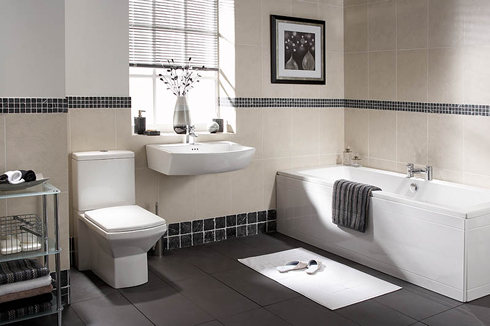How to Design Plumbing for a Bathroom

Bathroom can be designed in a number of ways; and the major factor in the planning process is the design of the plumbing system. Once the plumbing is installed, you will only be able to set up fixtures at specific places. However, with proper planning, the bathroom can be designed efficiently and according to your taste.
Ceramic tiles, mosaic design patterns, glass enclosed shower and tubs and double sinks can add to the beauty of washrooms. Before moving to the designing phase, you need to plan out all connections. Check out whether your planned renovations to the bathroom are in line with the local building department codes and specifications.
Instructions
-
1
Planning the plumbing
Do some research on the existing bathroom designs available and the plumbing required for each one of them. Use software or a piece of paper to draw out a floor plan of your bathroom. The scale should be chosen such that each inch of the graph paper represents one foot of flooring. Then add the details of the wall, the size and position of windows, and the placement of electric outlets, hubs, and bathroom fixtures.
If you are planning on a low budget renovation program, you can replace the sink, bath tub, and commode at their designated places without changing their respective positions. This will eliminate the need for major restructuring as no changes will be made to the already existing bathroom design. -
2
Plumbing considerations
In the designing phase, remember that changing the existing plumbing lines will cause the budget of the project to swell by manifold. Major plumbing changes require making structural changes to the bathroom, which are quite expensive, and also need the local governing body of building codes and regulations approval. The design which incorporates the concept of all the plumbing in one single wall is most suitable as it minimizes the cost as well as reduces the seepage problems. -
3
Multiple wall plumbing designs
The corridor bathroom design involves vanity, toilet, and sink on one wall with the tub on the wall facing them. This design requires plumbing on two walls. It gives the most spacious look to the bath room but requires a square shaped bathroom or else it will ruin the design of the bathroom.
There is another design in which bathroom fixtures are installed on three walls, while the other wall contains the opening door to the washroom.







